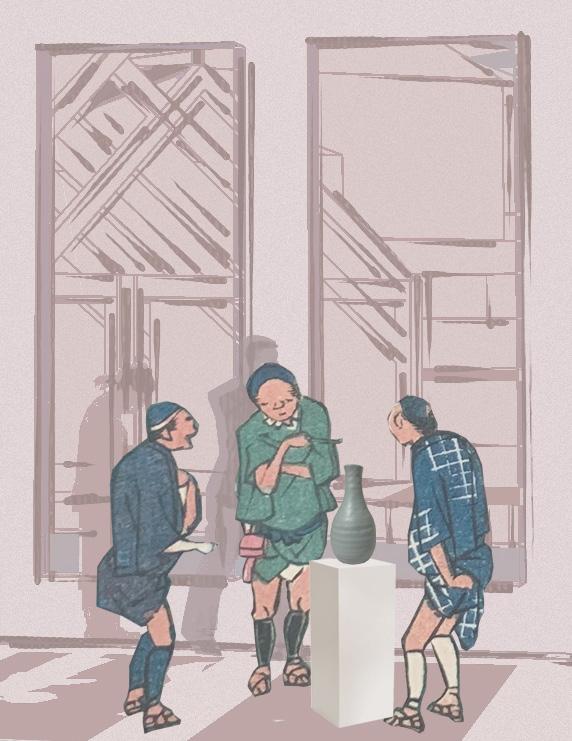
3 minute read
THE KYOTO TEMPLE OF POTTERY
Student:
Tutor:
Location, site:
Viola Königs
Thomas Woodcock
Kyoto, Japan thesis proposes the design of a Pottery Recycling Gild in Kiyomizu, Kyoto, to address the issue of 150,000 tons of ceramic waste produced in Japan each year, which is 5% off all non combustable waste in the country. The Recycling Gild will not only educate the public on ceramic recycling but also create a community space for Toki Shokunin 陶器 職人 to learn from each other, share knowledge, and invent new technologies. The location in Kyomizu, known for its pottery and density of pottery workshops, will allow for easy access to recycled clay and waste disposal. design idea is inspired by a walk through a Japanese temple that provides transparency in recycling process, from collection to recomposition of clay to new re tableware on display. programme includes a pottery workshop, for the public and for private potters to rent a space, and create together with an apprentice flat who seeks to learn the art and craft of pottery its recycling in more depth, this person will also be the gate keeper of the Temple. The space starts with a ceramics art gallery that not only celebrates small pottery but also large clay sculptures as well as the art of Kintsugi. The single way journey through the Pottery Temple leads you a large climbing kiln (Noborigama), around a wee moss garden, past the recycling factory, through a step by step display of the ceramics recycling process, to the heart of the temple with views overlooking the secret garden and its lake with a view up to the Otani Honbyo Temple. Heart is off to the side but connected by a golden bride to celebrate and accentuate the meaning of Kintsugi. This space is a gathering and celebration space that overlooks the secret garden and the whole Temple. Kintsugi is the art of exalting past injuries, the Way of Kintsugi can understood as a kind of therapy, inviting you to transcend your struggles and transform your personal hardship into gold. - Céline Santini.
Thesis: this way this thesis seeks to heal the damage ceramics waste has done to the Japanese counthrough a gap in the city filled with Gold. the ceramic other, pottery and disposal. transparency in display. a pottery space sculpleads you factory, with Temple. the secret Kintsugi can your coun-
This thesis proposes the design of a Pottery Recycling Gild in Kiyomizu, Kyoto, to address the issue of 150,000 tons of ceramic waste produced in Japan each year, which is 5% off all non combustable waste in the country. The Recycling Gild will not only educate the public on ceramic recycling but also create a community space for Toki Shokunin to learn from each other, share knowledge, and invent new technologies. The location in Kyomizu, known for its pottery and high density of pottery workshops, will allow for easy access to recycled clay and waste disposal.
The design idea is inspired by a walk through a Japanese temple that provides transparency in the recycling process, from collection to recomposition of clay to new re tableware on display. The programme includes a pottery workshop, for the public and for private potters to rent a space, and create together with an apprentice flat who seeks to learn the art and craft of pottery and its recycling in more depth, this person will also be the gate keeper of the Temple. The space starts with a ceramics art gallery that not only celebrates small pottery but also large clay sculptures as well as the art of Kintsugi. The single way journey through the Pottery Temple leads you past a large climbing kiln (Noborigama), around a wee moss garden, past the recycling factory, through a step by step display of the ceramics recycling process, to the heart of the temple with views overlooking the secret garden and its lake with a view up to the Otani Honbyo Temple.
The Heart is off to the side but connected by a golden bride to celebrate and accentuate the meaning of Kintsugi. This space is a gathering and celebration space that overlooks the secret garden and the whole Temple. Kintsugi is the art of exalting past injuries, the Way of Kintsugi can be understood as a kind of therapy, inviting you to transcend your struggles and transform your personal hardship into gold. - Céline Santini.
In this way this thesis seeks to heal the damage ceramics waste has done to the Japanese country through a gap in the city filled with Gold.










